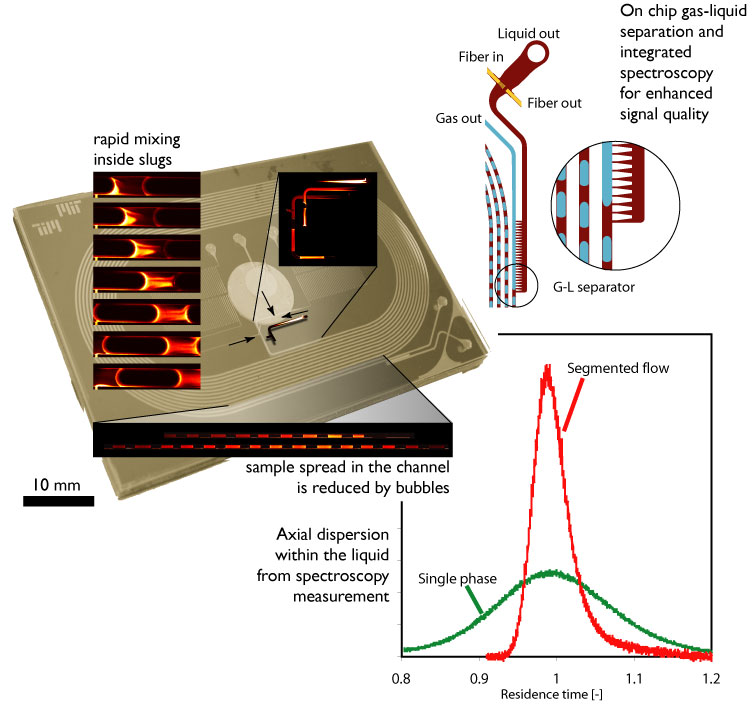84a On-Chip Dispersion Measurement in Segmented Flow through Microchannels
In segmented flow, the elongated bubbles occupy most of the cross section of the channel, and the only mechanism of transport to adjacent slugs is by diffusion to the lubricating film that separates the bubbles from the walls of the channel. The segmented gas-liquid flow pattern persists over a wide range of gas and liquid velocities. In difference to many classical dispersion studies, microfabrication provides us with channels of rectangular cross section. As a consequence, the lubricating film varies from thick menisci at the microchannel corners to thin films between them.
We build on a previous chip design [3] and measure dispersion in segmented flow consisting of liquid slugs and gas bubbles in a 300 Ám wide, 280 Ám deep microfluidic network. The soft-lithographically patterned chip accommodates (a) stabilized gas and liquid feeding, (b) a piezo-electrically actuated tracer reservoir that injects into the microfluidic channel (c) a 1.2m or 1.7m race-track microchannel, (d) capillarity-driven gas-liquid separation [1] and (e) spectroscopic tracer measurements. We demonstrate the suitability of the device for dispersion measurements using single-phase Taylor-Aris measurements, which allowed us to obtain accurate diffusion coefficients. Our experiments were conducted for gas and liquid velocities between 1 mm/s and 30 mm/s, and showed significantly reduced dispersion.
References:
[1] Guenther, A., Jhunjhunwala, M., Thalmann, M., Schmidt, M.A., and Jensen, K.F. Langmuir, 21 (4), 2005 and Guenther, A., Khan, S.A., Trachsel, F., Thalmann, M., Jensen, K.F. Lab on a Chip, 4 (4), 2004.
[2] Kreutzer, M.T., Kapteijn, F, Moulijn, J.A, Heiszwolf, J.J. Chem. Eng. Sci., 60 (22), 2005
[3] Trachsel, F., Guenther, A. Khan, S.A., Jensen, K.F. Chem. Eng. Sci., 60 (21), 2005. 
Web Page: jensengroup.mit.edu